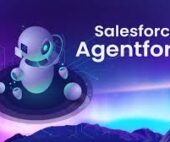GenAI in the Enterprise
🔔🔔 Follow us on LinkedIn 🔔🔔 10 Ways GenAI is Transforming the Enterprise Organizations are adopting Generative AI (GenAI) at different paces—some forging ahead with full-scale deployments, while others cautiously experiment with proofs of concept. Regardless of where they stand in their AI journey, enterprises must navigate challenges such as data quality, ethical considerations, compliance requirements, and AI accuracy. To maximize GenAI’s benefits while minimizing risks, companies must ensure sufficient, high-quality data, implement human oversight, and establish mechanisms to validate AI-generated outputs. AI’s success hinges on its ability to work alongside employees, enhancing efficiency without replacing human ingenuity. Despite these challenges, GenAI is already driving enterprise transformation across industries. Here are ten key ways it’s reshaping business operations: 1. Enhancing Customer Service GenAI elevates customer interactions, enabling more natural and intelligent automated support. Chatbots powered by GenAI engage customers conversationally, providing fast and accurate responses by analyzing vast amounts of data. For customer service agents, GenAI serves as a real-time assistant, offering insights and recommendations to improve interactions. According to Gartner, 85% of customer service leaders plan to explore or pilot conversational GenAI systems in 2025. However, research suggests that the most successful implementations will enhance—not replace—human support, striking a balance between automation and human touch. 2. Revolutionizing Knowledge Management GenAI excels at retrieving and analyzing structured and unstructured data, making it a game-changer for enterprise knowledge management. By surfacing relevant insights from vast information repositories, GenAI enables employees to access critical knowledge more efficiently. Forrester Research highlights that while AI-driven knowledge management boosts efficiency, true transformation occurs when it complements human expertise, fostering collaboration and innovation. 3. Optimizing Supply Chain Management With its ability to analyze historical, internal, and external data, GenAI is improving supply chain management by predicting demand, optimizing inventory, mitigating disruptions, and streamlining logistics. Organizations leveraging AI-driven insights can enhance operational efficiency, reduce costs, and drive sustainability by integrating environmental considerations into supply chain decisions. McKinsey & Co. reports that supply chain and inventory management are among the business functions where GenAI delivers the most significant revenue increases. 4. Automating Content Creation GenAI’s content generation capabilities extend beyond simple text creation to include audio, video, and design assets. Enterprises use GenAI for tasks ranging from drafting emails to developing full-scale marketing campaigns, significantly reducing content production time. A recent study by Enterprise Strategy Group found that 35% of businesses cite content creation as a primary benefit of GenAI, highlighting its role in accelerating marketing and communications efforts. 5. Accelerating Software Development GenAI is streamlining software development by generating code, user requirements, and technical documentation. This not only reduces development time for experienced programmers but also democratizes coding by enabling non-technical users to build applications with AI assistance. According to Capgemini Research Institute, AI-assisted coding is expected to account for 37% of all software development by 2026, significantly boosting productivity across industries. 6. Increasing Employee Productivity with AI Assistants AI-powered assistants are helping employees across various functions work smarter and faster. Whether aiding programmers, customer service representatives, or operations teams, GenAI-driven tools enable professionals to complete tasks with greater efficiency. A survey by Enterprise Strategy Group found that increased productivity is the top GenAI benefit, with 60% of respondents reporting measurable improvements in workplace efficiency. 7. Identifying Process Optimization Opportunities Beyond automating individual tasks, GenAI helps organizations rethink and optimize entire workflows. Companies are increasingly using AI to analyze operational processes, identify inefficiencies, and recommend automation opportunities. Rather than merely accelerating existing processes, AI is enabling businesses to redesign workflows from the ground up, unlocking new levels of efficiency. 8. Transforming Research & Development GenAI is playing an emerging role in research and development, particularly in fields like drug discovery and materials science. The technology helps researchers identify promising compounds, explore new innovations, and iterate through potential solutions at unprecedented speeds. While AI-driven R&D is still in its early stages, Gartner reports that GenAI is already improving productivity and cycle times in innovation-heavy industries. 9. Driving Competitive Differentiation and Revenue Growth Forward-thinking organizations are leveraging GenAI to create new products, services, and business models. Some use AI to identify market opportunities, while others integrate AI directly into their offerings. For example, J.P. Morgan’s Quest IndexGPT uses AI to analyze financial news and recommend investment opportunities, showcasing how businesses can differentiate themselves through AI-powered innovation. 10. Advancing Data-Driven Decision-Making By making analytics more accessible, GenAI is democratizing data-driven decision-making. AI-powered tools allow employees across all levels to interact with data conversationally, lowering barriers to data literacy and empowering informed decision-making. Beyond human decision support, GenAI is also paving the way for agentic AI systems—autonomous AI agents capable of making real-time decisions and executing tasks without human intervention. This next-generation AI capability is expected to further accelerate enterprise automation and innovation. The Future of GenAI in the Enterprise As businesses continue their AI adoption journey, GenAI will become an increasingly integral part of operations, driving efficiency, innovation, and competitive advantage. Organizations that strategically integrate GenAI while ensuring ethical oversight and responsible AI governance will be best positioned to harness its full potential. Like Related Posts Salesforce OEM AppExchange Expanding its reach beyond CRM, Salesforce.com has launched a new service called AppExchange OEM Edition, aimed at non-CRM service providers. Read more The Salesforce Story In Marc Benioff’s own words How did salesforce.com grow from a start up in a rented apartment into the world’s Read more Salesforce Jigsaw Salesforce.com, a prominent figure in cloud computing, has finalized a deal to acquire Jigsaw, a wiki-style business contact database, for Read more Service Cloud with AI-Driven Intelligence Salesforce Enhances Service Cloud with AI-Driven Intelligence Engine Data science and analytics are rapidly becoming standard features in enterprise applications, Read more






